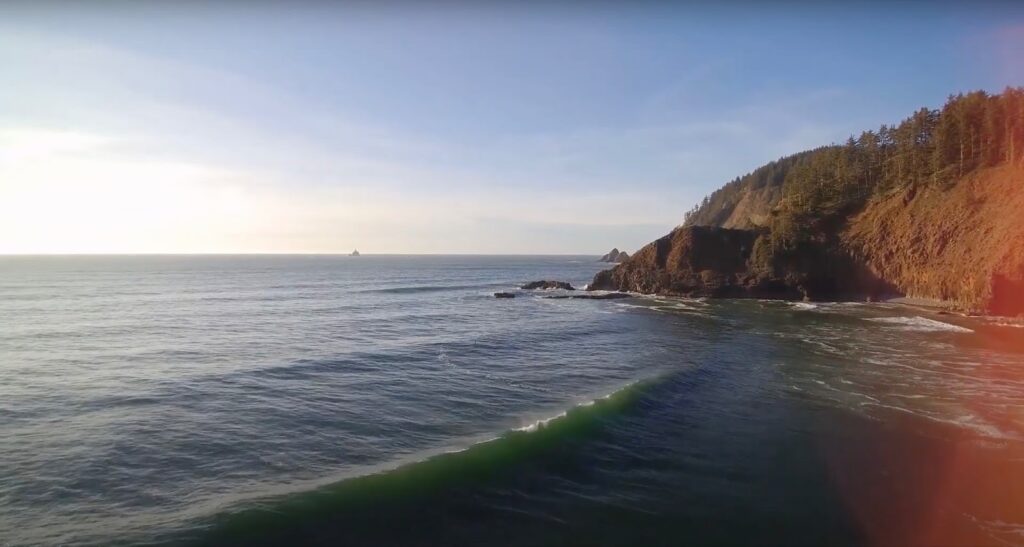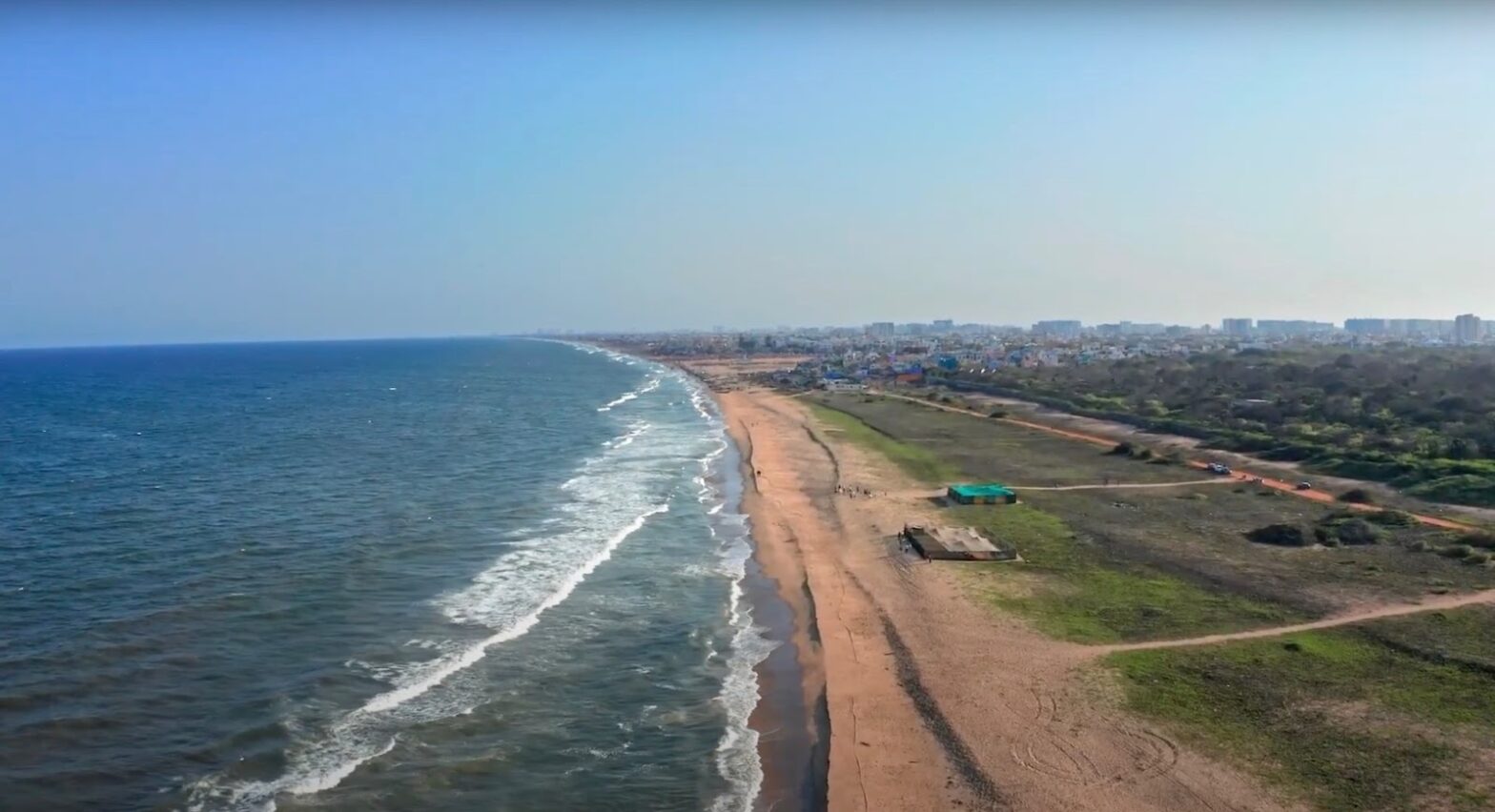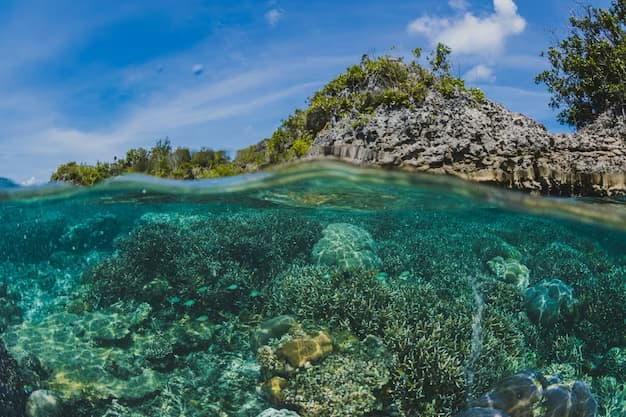The Indian Ocean, with its shimmering emerald waters, is not just a spectacle of beauty; it also holds a rich tapestry of human history. The fertile lands along its shoreline saw the rise of some of the world’s earliest and iconic civilizations, namely Mesopotamia and the Indus Valley. These regions, cradled by the Indian Ocean, gave birth to complex societies, pioneering breakthroughs in agriculture, writing, and architecture that went on to shape the course of human history.
Interesting Facts About the Indian Ocean
Uncovering the Indian Ocean’s Expanse
The Indian Ocean spreads across an impressive surface area of approximately 73,440,000 square kilometers or 28,360,000 square miles, securing its spot as the world’s third largest water body and covering roughly a fifth of the planet’s surface. Its vastness is a testament to its depth of history, mysteries, and wealth of natural resources.
The Lost Continent: Mauritia
Scientists have recently speculated about the existence of a hidden land mass, referred to as “Mauritia”, buried deep within the Indian Ocean. This discovery points towards a fascinating geological story of lost continents and ancient earth dynamics that remain to be unearthed.
Delving into the Depths: The Sunda Deep
The deepest point in the Indian Ocean known as the Sunda Deep, is nestled in the Java Trench near the southern edge of Java, Indonesia. It presents a maximum depth of about 25,344 ft, rivalling the profound depths of other famous ocean trenches around the globe.
Warming and Expanding Waters
The Indian Ocean, witnessing the effects of polar ice caps melting, expands at a rate of roughly 20cm every year. It’s a testament to the stark reality of global warming and a beckon for conservation efforts.
The Fuel for the World
Approximately 40% of the world’s oil supply is harvested from beneath the Indian Ocean’s depths. This translates to a critical role in global energy supply chains and a vital contribution to the world economy.
A World of Water
The Indian Ocean’s expanse contributes significantly to the world’s water load, with an estimated volume of 292,131,000 cubic kilometers. Its depths harbor an astounding range of marine ecosystems and complex currents systems.
A Hub of Global Trade
Some of the world’s most important and historical trading ports, including those in India, Australia, Indonesia, Sri Lanka, and South Africa, are situated along the Indian Ocean’s periphery. It has played an influential role in the development and prosperity of these regions and continues to be a bustling crossroad of global trade.
Rivers Run to the Sea
The Indian Ocean is the recipient of runoff from grand rivers like the Ganges and the Brahmaputra. These rivers, unparalleled in their scale and volume, deposit vast amounts of fresh water and sediment into the ocean.
The Highest Point: Sea Level
Due to its immense depth, the highest point within the Indian Ocean is the level of the sea itself. It’s a fascinating characteristic that enhances the mystique of this vast water body.
A Haven for Phytoplankton
Despite limited marine life due to the prevailing high temperatures, the Indian Ocean houses a significant concentration of phytoplankton. These microscopic organisms thrive in the ocean’s western part, energized by the yearly monsoon winds, particularly during summer months.
An Ocean with Many Names
While we recognize it as the Indian Ocean, ancient Sanskrit texts have named this body of water “Ratnakara,” translating to “a mine of gems,” while Hindi tradition refers to it as “Hind Mahasagar.”
The Indian Ocean: A Global Link
The Indian Ocean touches the shores of four continents (Asia, Australia, Africa, and Antarctica) and a variety of Asian and African countries, as well as numerous island groups. It stands as a global bridge, facilitating trade, travel, and cultural exchange.
Volcanic Origins: The Kerguelen Plateau
The southern Indian Ocean houses a large igneous province known as the ‘Kerguelen Plateau’. Believed to be of volcanic origin, it’s the largest of its kind in the world.
Challenges Posed: Pollution
Due to high traffic of oil transportation and shipping, the Indian Ocean is subject to extensive pollution from oil spills and waste, particularly in highly sensitive areas like the Persian Gulf, Arabian Sea, and the Red Sea.
Underwater Ridge: The Ninety East
An underwater mountain ridge, aptly named the Ninety East Ridge, separates the eastern and western regions of the ocean, reinforcing its unique geographical complexities.
Salinity Extremes
The Indian Ocean paints a curious picture of salinity, with both the world’s lowest and highest salinity measurements recorded within its expanse.
Java Trench: A Geological Marvel
The Indian Ocean houses fewer trenches than other oceans, but it’s not short of geological marvels. Its Java Trench, which stretches past Sumatra and extends up to the Andaman and Nicobar Islands, is the world’s second-longest.
A Mosaic of Basins and Seamounts
Owing to its complex ridge topography, the Indian Ocean is home to many basins, ranging from pockets of 200 miles up to sprawling expanses of 5600 miles. Additionally, it boasts numerous seamounts (extinct submarine volcanoes), primarily concentrated in the Central Indian Basin near Seychelles and Reunion.
The Origin Puzzle
Geographically and geologically, the Indian Ocean presents a unique narrative of its origin. Thought to have been formed during the significant geological event of the Gondwana supercontinent’s breakup and collision with Eurasia, the ocean has a fascinating birth story.
Boundaries: Defined and Undefined
While there’s no consensus regarding the southern boundary of the Indian Ocean, it is universally accepted that it shares a boundary with the Atlantic Ocean near Africa’s southern tip.
Interpreter of Tsunamis
The Indian Ocean is etched in global memory as the site of one of the world’s most devastating natural events, the 2004 tsunami. It claimed an estimated 200,000 lives, reminding us of the immense power and unpredictability of nature.

Conclusion
The Indian Ocean, the third largest ocean in the world, is far more than just a vast body of water. Its unique characteristics, from its role as a cradle of early civilization to its geological wonders, contribute significantly to our understanding of the planet’s history and future. Despite its high temperatures and unique oxygen content which limit marine diversity, this ocean is still an invaluable source of oil and is home to critical trade ports, impacting the global economy. Each fact about it fills us with a sense of awe and reminds us of the need for its preservation. By studying the Indian Ocean, we not only deepen our knowledge about our world, but also stress the importance of respecting and protecting these magnificent natural resources for future generations.



